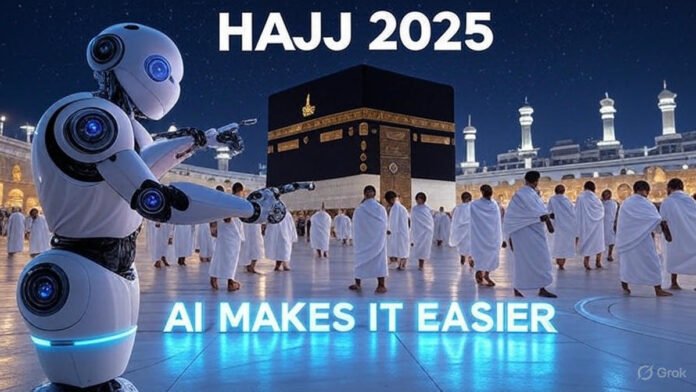
Pilgrims Arriving in Mecca for the Technologically Advanced Hajj
Muslims from around the world have already begun arriving in Mecca as the city prepares to host one of the largest religious gatherings in the world. In anticipation of intense desert heat and massive crowds, the Saudi authorities have activated several digital platforms and intelligent devices in both Mecca and Medina to guide, monitor, and support the millions taking part in the pilgrimage.
AI Robot Manarah-2 to Guide Pilgrims in Multiple Languages
Among the standout innovations is Manarah-2, an advanced AI-powered robot designed to assist pilgrims with real-time guidance and religious education. Equipped with a 21-inch touchscreen, 5G connectivity, and high-resolution cameras, the robot is stationed at the Grand Mosques and interacts in multiple languages, including Arabic, English, and Urdu. Manarah-2 also answers Islamic and Hadith-related queries, helping worshippers navigate rituals with ease and confidence.
High-Tech Surveillance and Crowd Management
To ensure the safety of pilgrims and prevent crowd-related incidents, the government has implemented a network of ground sensors, gate readers, and AI-enabled cameras. These smart surveillance systems are designed to analyze crowd density and alert authorities to any potential hazards. This initiative will significantly reduce the risk of stampedes and other emergencies by offering real-time crowd control data.
Drone Surveillance Offers Aerial Monitoring
A fleet of AI-powered drones will patrol above the holy sites, capturing live footage and transmitting it to centralized monitoring hubs. These drones are equipped with thermal imaging, GPS tracking, and aerial mapping technology, making it easier to detect congestion points and direct crowd movements effectively. The information gathered will allow local authorities to respond instantly to any unfolding situation.
Smart Screens Deliver Instant Information and Instructions
Throughout Mecca and Medina, multilingual smart screens are being installed at critical junctures. These screens will display up-to-date information, directions, safety instructions, and prayer schedules in several languages. The goal is to empower pilgrims from diverse cultural and linguistic backgrounds with clear, accessible guidance throughout their spiritual journey.
AI Software Assists Authorities with Faster Emergency Response
New AI-based emergency response software has been integrated into operations to speed up reaction times and improve coordination among on-ground personnel. The software can predict and flag high-risk situations by analyzing real-time data from surveillance systems, wearable devices, and environmental sensors. This innovation is particularly crucial in managing medical emergencies and heat-related incidents, ensuring rapid intervention when needed most.
Educational and Religious Support Enhanced Through Technology
Recognizing the spiritual diversity of the global Muslim population, the Saudi administration has launched initiatives to provide digital religious support tailored to individual backgrounds. Pilgrims will have access to:
Personalized sermons based on language and cultural needs
Interactive modules explaining rituals step-by-step
Virtual guidance sessions with scholars and muftis
Mental health support via AI-assisted chatbots
This layered approach ensures every pilgrim receives the support they need to perform Hajj with clarity, peace of mind, and a deeper connection to their faith.
Saudi Arabia Confirms June 4 as Official Start of Hajj 2025
The Saudi Ministry of Hajj has confirmed June 4, 2025, as the official start date for the pilgrimage. With over 1 million pilgrims already in the Kingdom and many more expected, the government is emphasizing safety, accessibility, and innovation. The integration of smart technology and artificial intelligence is not only modernizing the Hajj but also reaffirming the Kingdom’s commitment to providing a secure, respectful, and spiritually enriching experience for all attendees.
Hajj 2025 stands as a powerful fusion of tradition and technology, a pilgrimage where faith meets innovation on sacred ground.















